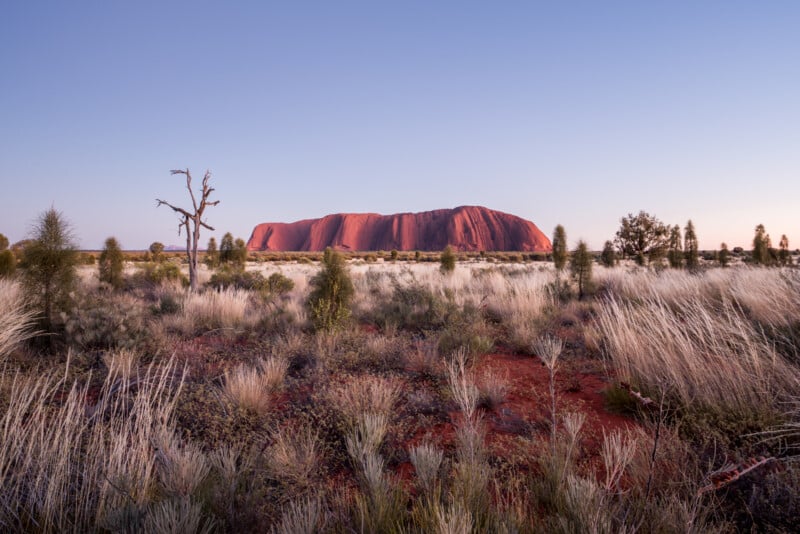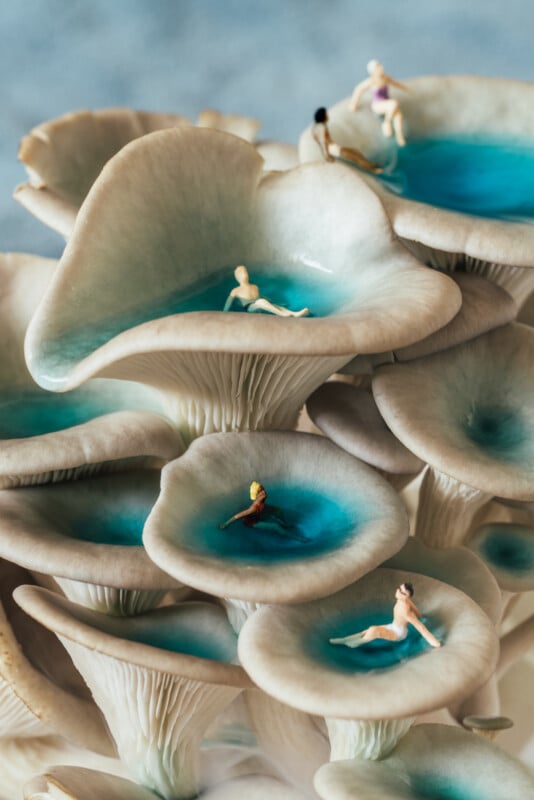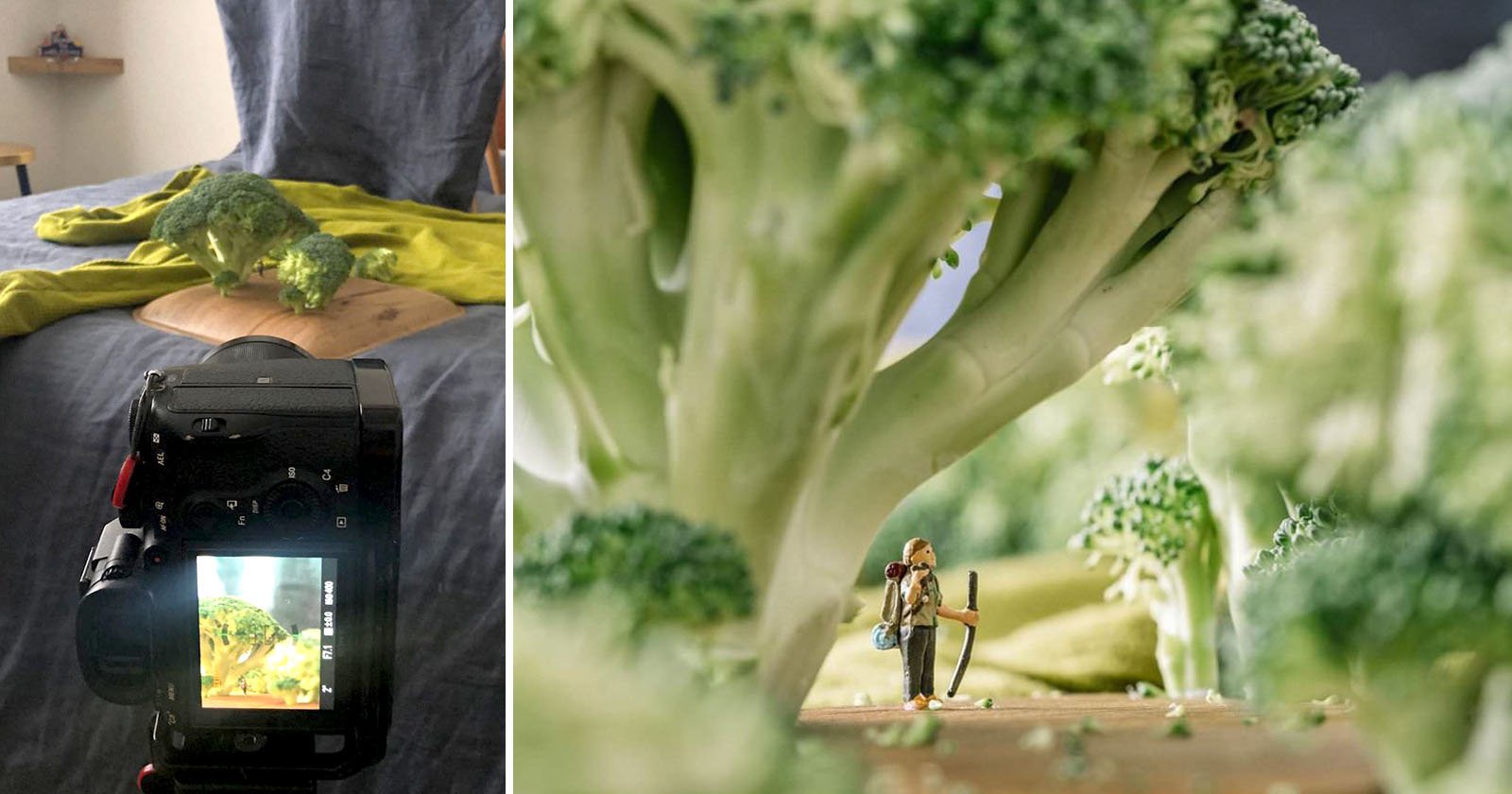6 Ways to Expand Your Creativity According to a Pro Photographer

Over the last decade, photographer Erin Sullivan has built an impressive travel photography portfolio by embracing creativity in both traditional and unconventional ways. Erin Outdoors, as she is more widely known, has inspired countless photographers and travelers alike to explore their artistic potential by learning how to expand their creativity.
Full disclosure: This article was brought to you by Adobe
At a Glance
Erin Sullivan found her passion for photography at an early age. At 15, she took her first photography class using a Nikon FE camera. “I was learning mostly on black and white film, and I instantly fell in love with the storytelling possibilities that the camera provided,” she explains. “I became incredibly passionate about photography, so I found myself applying to art schools, where I earned a double major in graphic design and environmental studies.”

In addition to photography, Sullivan had developed a passion for travel, even though that passion did not come from traveling. “I didn’t have many opportunities to travel abroad when I was younger,” she says. “Instead, I would watch countless hours of Anthony Bourdain and other travel shows. I have always had a curious personality, and those shows made me want to explore the world, learn about the local history and culture, eat delicious food, and meet new people. I felt the camera could be the tool that could help me achieve this goal.”

Sullivan got her first taste of travel when she began leading teen adventure trips worldwide. “I began to fully appreciate the beauty of nature and the outdoors when leading these trips,” she describes. “I would take groups climbing, backpacking, camping, canoeing, and kayaking. I was lucky to visit four continents during that time, so when I eventually left the guiding world, I had gained more confidence to pursue photography as a full-time job.”

Sullivan describes how a book she had read years later, The Artist’s Way by Julia Cameron, reminded her of those guiding trips. “In the book, the author describes a Shadow Artist, which is when you don’t pursue your art, however, you kind of walk parallel to it. This is what traveling and guiding was for me. I wanted to be a travel photographer, but I was intimidated. Instead, I became a traveling guide, which allowed me to experience a piece of my dream, but still felt safe enough to do without the fear of failure.”

As Sullivan began her career as a full-time photographer, she relied on her creativity to help her accomplish career goals. “While I learned the ropes of owning my own photography business, I relied on my creativity to continue to create engaging content that would help me gain a following on my Instagram, which led to being found by travel brands who would hire me to create content.”

Drawing from her journey and insightful reflections, Sullivan shares the tips that help her unlock her creativity, making her a better photographer and successful business owner.
Act on Inspiration Immediately
Sullivan emphasizes the importance of acting on creative ideas as soon as they strike. “In 2014, after returning to the US after many months guiding and traveling, I bought my first smartphone and reserved the handle @erinoutdoors on all the social media platforms, as well as purchasing the URL to house my website,” she describes. “At the time, I was intimidated by the thought of starting a blog or business, even though I felt called to it. I reserved the name just in case I decided to do something with it, and I’m so glad I did.”

Acting on her inspiration immediately also helped Sullivan launch a project that became incredibly successful, landing her media coverage, a magnitude of new followers, and brands who wanted to be a part of it.
During the COVID-19 lockdown, Sullivan initially struggled with what to do. “Like most of us, I was suddenly working with a different set of circumstances. I went from traveling and photographing almost full-time to being inside my apartment,” she describes. “I remembered what I would do as a kid to pass the time when I was bored. I had the idea to try to recreate the feeling of wonder and awe that the outdoors and travel gives me, using everyday objects inside my apartment”

Instead of waiting to implement the idea, Sullivan immediately got to work, identifying household objects that could be used to recreate nature on a miniature scale in her bedroom. “I have found that, the longer you put off an inspiring idea, the more self-doubt can creep into your mind,” she explains.

Sullivan also recommends putting the screens away as soon as an idea comes to mind. “Nothing can derail creativity faster than scrolling on your phone. Sure, maybe you see someone else’s idea that might spark some creativity, but that is not the creative idea that you just had. It’s just a distraction pulling you away from taking action to make your idea come to life. Even if it is just a small step, take some kind of action immediately. Even a small action can give you the momentum you need.”
Let Go of Perfectionism
Perfectionism can halt creativity, Sullivan describes. “Many creatives can relate to wanting a final photograph or project to be perfect,” she states. “However, don’t let that get in the way of you taking action.

Sullivan encourages creatives to start imperfectly rather than waiting for the perfect moment or result. “There’s never going to be a right time, and you’re never going to feel 100% ready,” she explains. “The idea is a gift. Your job as a creative is to take the first step to bring the idea to life, even if you don’t know how. You will learn how along the way, as long as your embrace that the process might not be perfect.”
Prioritize Mindset and Wellness
In her career, Sullivan has often mentored young creatives on how to start their own successful photography business. She has written a popular e-guide called “8 Keys to a Successful Photography Business,” in which she details how having the proper mindset is not only the key to a successful photography career but also, a vital part of the creative process.

“I think many people think of the ‘mindset’ thing as fluff. It is easy to brush off. You can think to yourself, ‘Of course, I want to be creative and successful, so I have the right mindset,” Sullivan explains. “That is just a tiny fraction of what having the right mindset means. Of course, having the drive to be creative and successful is important, but how do I handle rejection? If I get passed over for a job or a project that I want, it’s easy to let self-doubt and second-guessing creep into your mind.”

Sullivan goes on to say that comparing yourself to others can also foster self-doubt and negatively impact confidence. “I knew I had to train myself to stop needing external validation a long time ago. I learned to focus more on the things I can control, and the places where my values actually live, rather than focusing on number of followers or other vanity metrics.”

Creating a positive mindset is dependent on a multitude of factors, Sullivan explains. “Every one of us is wired differently, so there is no one-size-fits-all way to change your mindset. I do believe having a routine can help all creatives improve their mindset. Some people are more productive and creative when they wake up at dawn, while others find themselves harnessing their creativity while burning the midnight oil. Figuring out what routine works best for you helps create a solid foundation from which your creativity can flourish. ”

Sullivan describes how practicing self-care and wellness can have extraordinary effects on your creativity. “If you consider our biology as human beings as hardware, our hardware isn’t built to keep up with the current society that we live in. We aren’t wired to stare at screens all day. We are hardwired to be outside, write with our hands instead of a keyboard, be with ourselves in silence, work with other people in person. These are core to our hardware, so the more you can tap into those core concepts, the more creativity you can find.”

She concludes: “It is remarkable how so much of our brain power is tied into our physical and mental health. Eating whole foods, exercising, meditating, keeping a handwritten journal, and giving yourself plenty of breaks and time to recharge your internal batteries can lead to more energy and brain power, which includes increased creativity.”
Use Constraints to Your Advantage
Sullivan believes that limitations can fuel creativity, instead of hampering it. During the pandemic, restrictions became the framework for her art. “I was a pretty good student, so I have found that I am more creative when I give myself assignments,” Sullivan describes. “And with any challenging assignment, there are always constraints included. The assignment during the pandemic was clear: You can’t leave your apartment. Use household objects. Create something that expresses wonder and awe,” she says. By narrowing the possibilities, she focused her energy and imagination effectively.
The results of her assignment, Our Great Indoors, became a viral project that was viewed by millions of people around the world. “I think the photos performed so well because everyone could relate to them,” she says. “Many of us spent a lot of time indoors during that time, daydreaming of returning to our care-free lives exploring the outdoors, and I think the photos brought our daydreams to life.”

Even though the pandemic restrictions have come and gone, Sullivan still photographs her miniatures. “Going back to the importance of creating art for yourself first, there are people who would say I should give up the miniatures and go back to only photographing the outdoors. For me, however, this project continues to fuel my creativity, so why would I give it up? I enjoy creating these miniature scenes, and even if no one else sees them or likes them, at the end of the day, the project, and its constraints, help to keep the creative part of my brain active.”

It is clear that the Our Great Indoors project still is popular with Sullivan’s fans, as her annual miniatures wall calendar continues to be a popular item in her online store.

Sullivan believes that constraints can help prevent the overwhelming paralysis of too many choices, offering a clearer path to creativity.
Find Creativity in the Community
Aligning yourself with the right community can nurture and expand your creativity, Sullivan says. “It’s important to find the people that you feel safe with and who your ideas feel safe with,” she explains. “For us creatives, we are always battling to keep a constant barrage of ideas organized and fleshed out. Bouncing those ideas off of friends who can understand your vision can be incredibly helpful in expanding your creativity.”

She explains that we are all capable of finding a wealth of success and creativity, it’s a matter of taking the right steps to accomplish your goals and keep your creativity burning. “When I first got into the photography community, I began meeting other people via Instagram. I had connected with Renee Hahnel because we both lived in Colorado at the time. We quickly discovered that we had a lot in common. We had both just started our travel blogs and our Instagram accounts, and we were starting to figure it all out. We went on a hike, and that was the beginning of a long friendship. Directly and indirectly, my friendship with Renee has been wonderful for me creatively.”
Sullivan learned early on one of her most important lessons when engaging with the creative community. “The people that I look up to, they aren’t that different from me. They are just people too. The only difference between you and them is that they started and you didn’t.”

Sullivan made another creative connection at the first Sony Kando trip in Santa Barbara, California. “I was, and still am, a member of the Sony Alpha Collective, which at the time was a group of young, up-and-coming photographers,” Sullivan explains. “When I arrived, I noticed that the Sony Artisans were there. In my mind, at that time, these were real, accomplished photographers who had photos in National Geographic. After a workshop one day, I was sitting with Colby Brown, whose work I was aware of on Instagram. I used the opportunity to connect with him, ask some questions, share my goals, and pitch myself as a good travel buddy. A few months later, I joined him on an adventure in Namibia, and Myanmar the following year. In the years since he has become a great friend and mentor, and the cascading effects on my confidence, success, and creativity that chance connection has given me has been very valuable to me.”
Think of Editing as a Creative Opportunity
For any photographer, editing is a crucial part of the creative process. For Sullivan, this process starts with her applying her custom-made presets in Adobe Lightroom. “With years of editing experience using Lightroom, I have developed a look and feel for my photographs. While I try to get as much right in camera as possible, I have developed several Lightroom Presets of my most common editing styles that allow me to quickly edit an image. Since most of my creativity comes from being in the field, I want to spend as little time as possible editing, and being able to apply slight edits to my images with my own presets allows me to reach that finish line quickly, which leaves me more time to get back out into the field.”

However, Sullivan describes the one project that she didn’t mind the extra time spent editing in Photoshop and Lightroom: Our Great Indoors. “I enjoyed editing the photos that I would take of my miniatures,” she says.
“The time to set up these scenes was substantial, however, the constraints of the project would leave me with RAW files that were less than ideal. Often, the miniature objects just wouldn’t look right in a macro lens. Sometimes the plastic miniature people might look like clay, so I would make micro adjustments that would bring that character to life. I might change the color of the clothing, the skin tone, or the color of the boat that they were in… stuff like that. When I would view the RAW files, I could tell right away this was a miniature figurine, so my goal was to make it as lifelike as possible. I wanted an image that transported the viewer to the scene, so I was hyperfocused on editing super small details that I would never touch in a real outdoor photograph. I love the creative reward that editing them in Lightroom and Photoshop gives me”

For Sullivan, creativity thrives when she embraces action, doesn’t chase perfection, and builds practices and routines that nurture her mind. She advises that by staying open to new ideas, fostering meaningful relationships, and finding inspiration in limitations, anyone can expand their creative horizons.
More from Erin Sullivan can be found on her website and Instagram.

Full disclosure: This article was brought to you by Adobe
Image credits: All photos by Erin Sullivan



